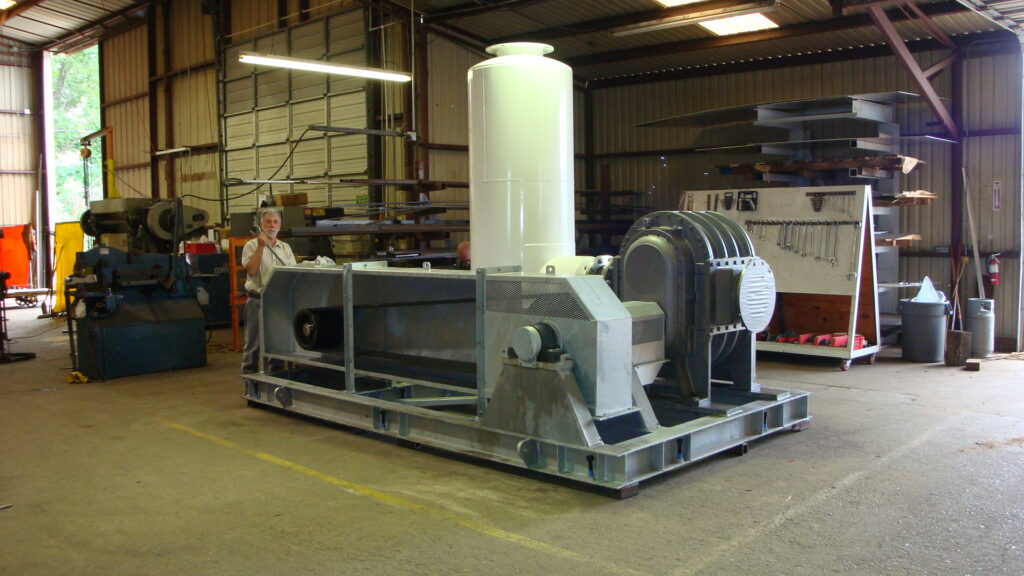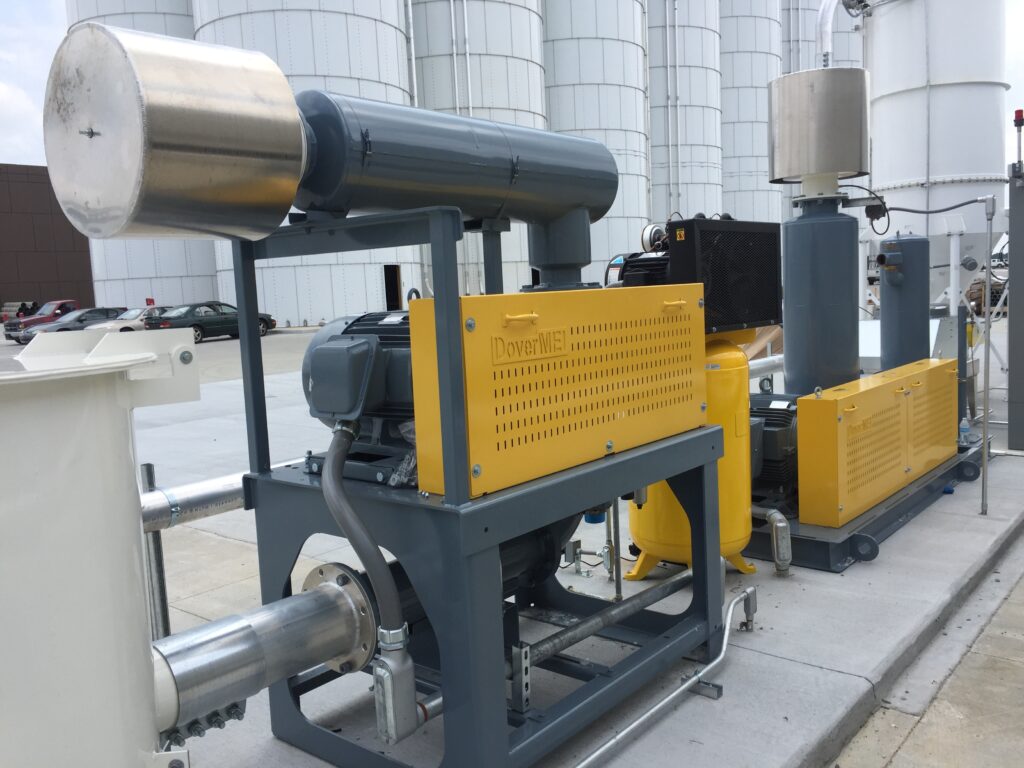Understanding PD Blower Design

When designing a positive displacement (PD) blower system, it is crucial to maintain efficiency and longevity. Here are some key factors to consider:
- Keep blower design within 80-85% of maximum speed and temperature range to ensure durability.
- Relief valves typically relieve about 2 psi before their rating. To prevent excessive pressure buildup, normal convey pressure should be 2.5-3 psi below the relief valve setting.
- Blower horsepower must be sufficient to open the relief valve. Undersized motors or oversized relief valves can cause severe damage and burn out blowers.
- Proper blower inlet positioning is critical. If the blower inlet faces the motor, it can lead to bearing and shaft loading issues.
- Understand the heat of compression: expect a 13-15°F rise per psi.
Typical system parameters:
- A 6” (10) blower with 100 HP has a max pressure of 12.5 psi. The relief valve should be set at 12.5 psi or lower, and convey pressure should be below 10.5 psi. On a 100°F day, the discharge air temperature can reach approximately 250°F.
- A 6” (10) blower with 125 HP has a max pressure of 14.5 psi. With a relief valve set at this level, the convey pressure should be below 12.5 psi. On a 100°F day, the discharge temperature can reach approximately 287°F, which is near the blower’s temperature capacity.
Importance of Proper Blower Oil Maintenance
To maintain blower efficiency and longevity, always follow the manufacturer’s recommendations regarding oil changes and usage:
- Read and follow the blower manufacturer’s manual to ensure compliance and maintain warranty coverage.
- Most manuals recommend changing oil after the first 100 hours and then every 500 hours afterward.
- A company operating 24/7 would need an oil change every 20 days at this interval.
- Synthetic oils offer extended life and better equipment protection, but not all synthetics are the same.
- Some synthetic oils contain special additives that extend oil life and reduce wear on equipment.
- Ensure the correct type of synthetic oil is used. The oil must be crankcase oil (not gear oil or gear lube). Many customers mistakenly purchase the wrong oil by only looking for ISO 220 or ISO 320. If unsure, buy oil from DoverMEI.
Temperature’s Impact on Blower Oil Life
Temperature plays a major role in determining the longevity of blower oil:
- If oil temperature remains below 180°F, high-quality synthetic oil can last up to 6,000 hours.
- For every 15°F increase above 180°F, oil life is cut in half:
- 195°F = 3,000 hours
- 210°F = 1,500 hours
- 225°F = 750 hours
- 240°F = 375 hours
- To ensure proper maintenance, oil should be changed every 500 hours under high-temperature conditions.
- Installing oil temperature probes is the most effective way to monitor actual oil temperature.
- A chart can be created to correlate case temperature with oil temperature, considering ambient temperature and blower convey pressure. However, each system varies.
Blower Belt Maintenance
Proper belt maintenance helps prevent operational issues and premature failures:
- Blower sheaves should be positioned within 0.25” from the end plate to avoid excessive bearing and shaft loading.
- Maintain the correct belt tension by using a belt tension gauge.
- Proper sheave alignment is crucial. Traditional straight-edge alignment is useful, but modern laser alignment tools provide higher precision.
- The belt factor of safety should be between 1.4 and 1.75. Larger factors can lead to higher failure rates due to excessive shaft and bearing loads.
- Always use banded belts. Matched belt sets are no longer reliable.
General Blower Maintenance Practices

Routine maintenance checks can help identify issues early and extend blower lifespan:
- Check for oil leaks daily to prevent lubrication failure.
- Keep filter elements clean and replace them quarterly to maintain airflow efficiency.
- Use an infrared temperature meter to establish a baseline housing temperature near bearings.
- Monitor vibration levels regularly as increased vibration can indicate mechanical issues.
- Listen for unusual noises that may suggest component wear or misalignment.
Automating Blower Maintenance
Automation can simplify blower maintenance and improve reliability:
- DoverMEI offers sensors and control systems that can automate temperature monitoring, oil life tracking, vibration analysis, and more.
- Implementing automated solutions reduces downtime and improves system performance.
Conclusion: Trust DoverMEI for Your Blower Needs
For optimal PD blower design and maintenance, partnering with a trusted provider is essential. DoverMEI offers high-quality blowers, oil, belts, and maintenance solutions to keep your system running efficiently. Whether you need reliable parts or advanced automation, DoverMEI has the expertise to support your operations. Contact DoverMEI today to learn more!
(864) 473-5054 | zw@dovermei.com
sales@dovermei.com
(713) 690-5200 | Texas
(864) 472-6456 | South Carolina
